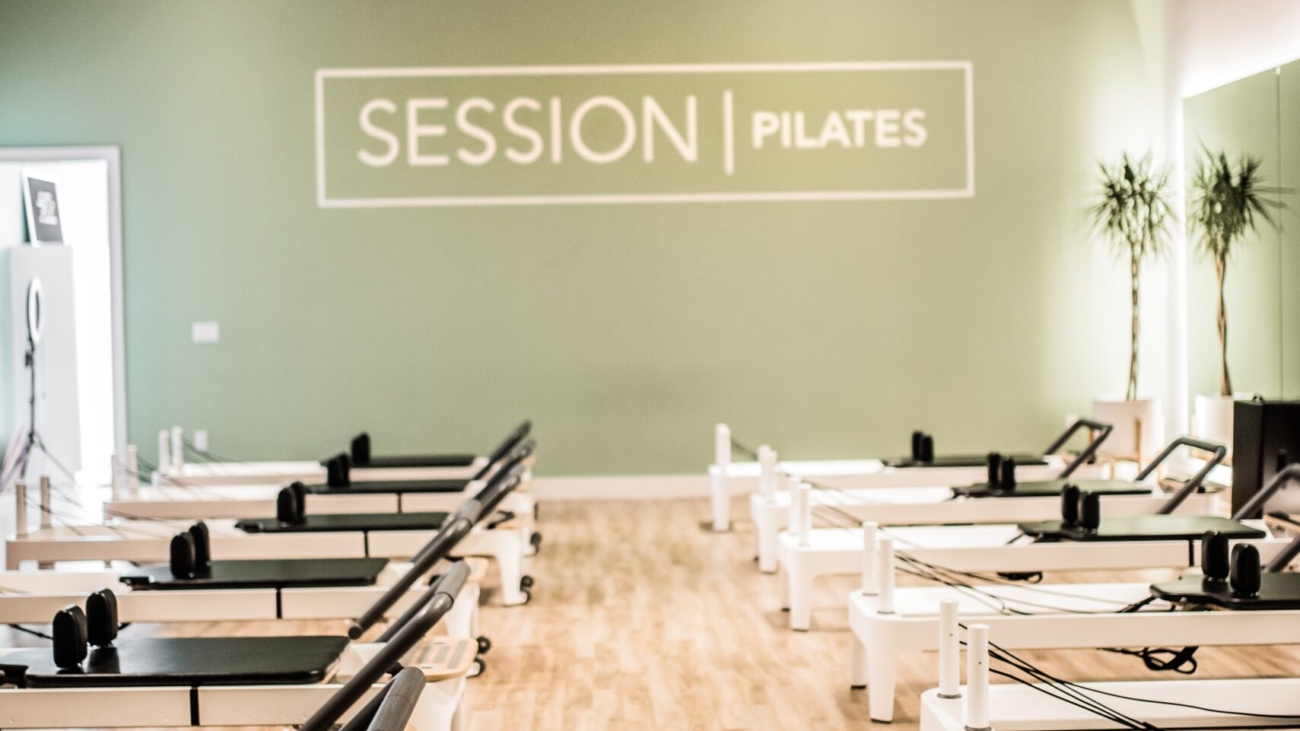Pilates is one of the most beneficial forms of exercise that can bring numerous health benefits to an individual’s life. Not only can Pilates help improve core strength and flexibility, it can also help reduce risk for injuries and provide improved posture. If you have been considering trying Pilates, let this article be your motivation to start! We break down 19 reasons why making Pilates a part of your regular fitness routine will help you feel personally empowered and recharged like never before.
What is Pilates?
Pilates is a low-impact workout that can be done either at home or in a studio. It strengthens the core muscles and helps to improve posture, balance, and flexibility. Pilates is also said to help with stress relief and can be used as part of a physical therapy program.
History of Pilates
Pilates was created by Joseph Pilates in the early 20th century. Pilates was born in 1880 in Mönchengladbach, Germany. He was a sickly child and was often bedridden. To help combat his weakened condition, his father taught him wrestling and gymnastics. As he grew older, Pilates continued to practice gymnastics and bodybuilding; he also began to study Eastern disciplines such as yoga and Zen meditation. By the time he was a young adult, Pilates had developed a unique system of physical and mental conditioning that he called “Contrology.” In 1912, Pilates emigrated to the United States, where he opened a gymnasium in New York City. He attracted a devoted following among dancers—including the famous American dancer Martha Graham—and other celebrities of the day. Members of his studio would often use apparatus such as wooden boards, pulleys, and rings to perform exercises designed to tone their muscles and elongate their spines. Pilates believed that physical health was essential for achieving spiritual harmony. He saw his method as a way to unify the mind, body, and spirit. His motto was “Contrology is complete coordination of body, mind, and spirit.” During World War I, Pilates worked as an ambulance driver in England; later he interned German prisoners of war at a hospital on the Isle of Man.
Exercise Benefits of Pilates
Pilates is a great form of exercise for people of all ages and fitness levels. It helps to improve flexibility, posture, and overall strength. Additionally, it can help to prevent injuries and improve recovery time from injury. There are many benefits to incorporating Pilates into your workout routine. Here are just a few of the benefits that you may experience:
1. Improve Flexibility: Pilates helps to improve flexibility by stretching and lengthening the muscles. This can help you to avoid injuries and also make everyday activities, such as reaching for something on a high shelf, much easier.
2. Improve Posture: Poor posture can lead to many problems, such as back pain and tightness in the neck and shoulders. Pilates can help to correct this by strengthening the muscles that support good posture.
3. Strengthen Core Muscles: One of the main focus areas of Pilates is the core muscles. Strong core muscles help to protect the spine and improve balance. Additionally, strong abs can give you better results when working out other areas of your body.
Substance Abuse Treatment Through Pilates
Substance Abuse Treatment Through Pilates Pilates is a system of exercises that uses controlled movements to stretch and strengthen the body. It was developed by Joseph Pilates in the early 20th century, and has since become a popular form of exercise for people of all ages and fitness levels. Recent research has shown that Pilates can be an effective treatment for substance abuse disorders. A study published in the journal Substance Abuse in 2016 found that Pilates was associated with reductions in symptoms of depression, anxiety, and stress in individuals with substance use disorders.
Pilates can help to improve mental and physical health, both of which are important for recovery from substance abuse disorders. The mind-body connection that is created through the practice of Pilates can help individuals to connect with their bodies and develop a greater sense of self-awareness. The physical benefits of Pilates include increased strength, flexibility, and stamina, which can help to reduce cravings and manage withdrawal symptoms. If you or someone you know is struggling with a substance abuse disorder, consider finding a local Pilates studio or instructor who can help you to get started on your journey to recovery.
Injury Prevention Due to Practicing Pilates
Pilates is a low-impact form of exercise that can help to prevent injuries, especially those related to repetitive stress or overuse. By strengthening the core muscles and improving posture, Pilates can help to take the strain off of the joints and spine, reducing the risk of injury. Pilates is also beneficial for improving flexibility and balance, both of which can help to prevent falls and other accidents.
Mental Benefits of Pilates
1. Mental Benefits of Pilates Pilates offers a host of mental benefits, including improved focus, concentration, and mind-body awareness. The mindful nature of the practice can help to quiet the monkey mind, promoting a more relaxed and stress-free state of being. Additionally, the breathwork involved in Pilates can help to improve respiratory function and reduce anxiety.
Strength Training Through Pilates
Pilates is a great way to strengthen your core. By doing Pilates regularly, you can achieve a strong and toned core. Not only will this help you look great, but it will also improve your posture and protect your spine. A strong core can also help to prevent injuries in other parts of your body.
Props Needed for A Successful Workout
When you think of Pilates, you may think of a reformer or a mat, but there are other props that can be useful in your practice. Here are some props that can help you get the most out of your workout:
1. A stability ball: A stability ball is a great way to add challenge to your exercises. It can be used to support your back or legs, or to add an extra level of difficulty to exercises like crunches or push-ups.
2. Resistance bands: Resistance bands offer another way to add challenge to your workout. They can be used for a variety of exercises, including arm and leg curls and presses.
3. Weights: dumbbells or kettlebells can also be used in Pilates exercises to increase the intensity. For example, holding a weight in each hand while performing side-lying leg lifts will make the exercise more challenging.
4. A Pilates ring: The ring is a small, circular prop that can be used for various exercises, including inner thigh squeezes and targeted arm work.
5. Foam rollers: These cylindrical pieces of foam can be used for self-massage or to assist in stretching exercises.
Adapting the Program to Different Body Types
Different people have different body types, which means that the same Pilates program may not work for everyone. It’s important to find a program that is tailored to your specific body type in order to get the most benefit from it. There are three main body types: ectomorph, mesomorph, and endomorph. Each one has its own set of characteristics and responds differently to exercise. An ectomorph is typically thin with long limbs. They have difficulty gaining weight and usually have high metabolism rates. Because of this, they need to be careful not to overtrain, as this can lead to injuries. A mesomorph is somewhere in between an ectomorph and an endomorph. They tend to be muscular with average proportions. Mesomorphs respond well to both cardio and strength training, but need to be careful not to put on too much muscle mass. An endomorph has a larger frame and tends to carry more weight, especially around the midsection. They may have difficulty losing weight, but with proper diet and exercise, it is possible. Pilates can be beneficial for endomorphs because it helps build core strength and improve posture.
Fun Variations on Traditional Exercises
1. Seated Leg Lifts – instead of lying down on your back, try sitting up tall in a chair with your feet flat on the floor. Slowly lift one leg straight out in front of you, keeping your abs pulled in tight. Hold for a few counts before lowering back down. Repeat on the other side.
2. Pilates Scissor – start by lying on your back with both legs in the air, about a foot off the ground. Slowly lower one leg towards the floor while raising the other leg higher into the air. Keep your abs pulled in and switch legs, continuing to alternate sides.
3. Pilates Hundred – this exercise is traditionally done lying down, but can also be done sitting up tall in a chair. Start by inhaling deeply and then exhale as you lift your head, shoulders, and legs off the ground/chair seat. Pump your arms up and down vigorously as you hold this position for 10 counts. Inhale deeply again and then exhale as you release back down to starting position.
Techniques of Stretching Through
1. There are many benefits to incorporating Pilates into your workout routine.
2. One of the major benefits is that it can help improve your flexibility and range of motion.
3. Here are some specific techniques you can use to help stretch through your Pilates workout: a. Pay attention to your breath – Inhale on the exertion and exhale on the release. This will help you get the most out of each stretch. b. Use props – If you’re new to Pilates, or struggle with a certain move, props can be a great way to help you safely execute the exercise and get a good stretch. c. Go slowly – Don’t rush through your movements. Instead, take your time and focus on each movement and position. This will help ensure you don’t injure yourself and get the most out of your stretching routine.

